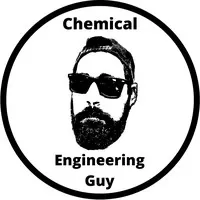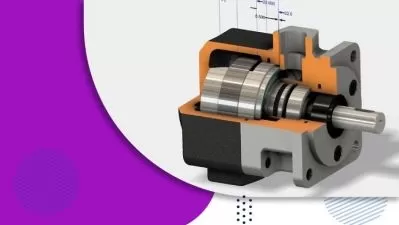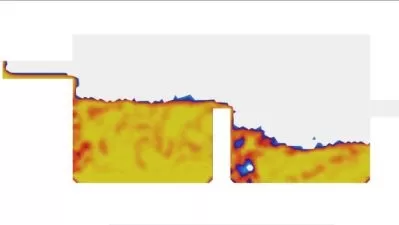Master Fluid Mechanics for Incompressible Flow
Chemical Engineering Guy
13:13:29
Description
Applications of Mechanical Energy Equation, Piping & Fittings, Pumps & More!
What You'll Learn?
- Fundamentals of Mechanical Energy and the Mechanical Energy Equation
- Mechanical Energy: Kinetic, Potential, Pressure and Work
- Applications of the M.E.E. to Engineering Cases
- Bernoulli's Law
- Torricelli's Law
- Operations involving liquid flow through pipes and equipment
- Fluid Mechanics applied to Incompressible Flow (Liquids)
- Friction Loss in Piping Systems & Other Fluid Applications
Who is this for?
What You Need to Know?
More details
DescriptionOverview:
This course provides students with a fundamental understanding of Fluid Mechanics in Incompressible Flow, its equations, and applications in various fields, including chemical engineering, environmental science, and process control.
Students will learn how to analyze, model, and solve problems related to Liquid Flow in Pipes, Equipment and More. It will also cover a wide range of systems, from simple piping systems, to complex industrial processes.
The course combines theoretical concepts with practical applications to equip students with valuable skills in problem-solving and decision-making.
What You Will Learn:
By the end of this course, you will be able to:
Basic Understanding of Fluid Mechanics
Fundamentals of Incompressible Flow
Fluid Properties and Behavior
Fluid Statics and Dynamics
Mechanical Energy as well as Mechanical Energy Equation Applications
Mechanical Energy types:Â Kinetic, Potential, Pressure, friction loss, Inlet/Outlet Work
Torricelli's Law, Continuity Equation and Bernoulli's Principle
Pipe Flow and Basic Pumping Systems
Type IÂ Problems:Â Solving for a single variable
Type IIÂ Problems:Â Solving for a volumetric flow rate given a system
Type IIIÂ Problems:Â Solving for piping dimensions, i.e. pipe diameter
Series Flow Systems
Parallel Flow Systems
Complex System: Branched Flow & More
Recommended Audience:
This course is suitable for both: Students & Professionals. From Undergraduate and Graduate engineering students, environmental science majors, all the way to Professionals in engineering, environmental, and technical fields.
Prerequisites:
Basic Knowledge of Mathemathics &Â Physics
Who this course is for:
- Scicience & Engineering Students
- Process Engineers, Chemical Engineers, Mechanical Engineer, Piping Engineering, etc...
- Operator of Manufacturing/Process Industries
Overview:
This course provides students with a fundamental understanding of Fluid Mechanics in Incompressible Flow, its equations, and applications in various fields, including chemical engineering, environmental science, and process control.
Students will learn how to analyze, model, and solve problems related to Liquid Flow in Pipes, Equipment and More. It will also cover a wide range of systems, from simple piping systems, to complex industrial processes.
The course combines theoretical concepts with practical applications to equip students with valuable skills in problem-solving and decision-making.
What You Will Learn:
By the end of this course, you will be able to:
Basic Understanding of Fluid Mechanics
Fundamentals of Incompressible Flow
Fluid Properties and Behavior
Fluid Statics and Dynamics
Mechanical Energy as well as Mechanical Energy Equation Applications
Mechanical Energy types:Â Kinetic, Potential, Pressure, friction loss, Inlet/Outlet Work
Torricelli's Law, Continuity Equation and Bernoulli's Principle
Pipe Flow and Basic Pumping Systems
Type IÂ Problems:Â Solving for a single variable
Type IIÂ Problems:Â Solving for a volumetric flow rate given a system
Type IIIÂ Problems:Â Solving for piping dimensions, i.e. pipe diameter
Series Flow Systems
Parallel Flow Systems
Complex System: Branched Flow & More
Recommended Audience:
This course is suitable for both: Students & Professionals. From Undergraduate and Graduate engineering students, environmental science majors, all the way to Professionals in engineering, environmental, and technical fields.
Prerequisites:
Basic Knowledge of Mathemathics &Â Physics
Who this course is for:
- Scicience & Engineering Students
- Process Engineers, Chemical Engineers, Mechanical Engineer, Piping Engineering, etc...
- Operator of Manufacturing/Process Industries
User Reviews
Rating
Chemical Engineering Guy
Instructor's Courses
Udemy
View courses Udemy- language english
- Training sessions 86
- duration 13:13:29
- Release Date 2024/05/17











